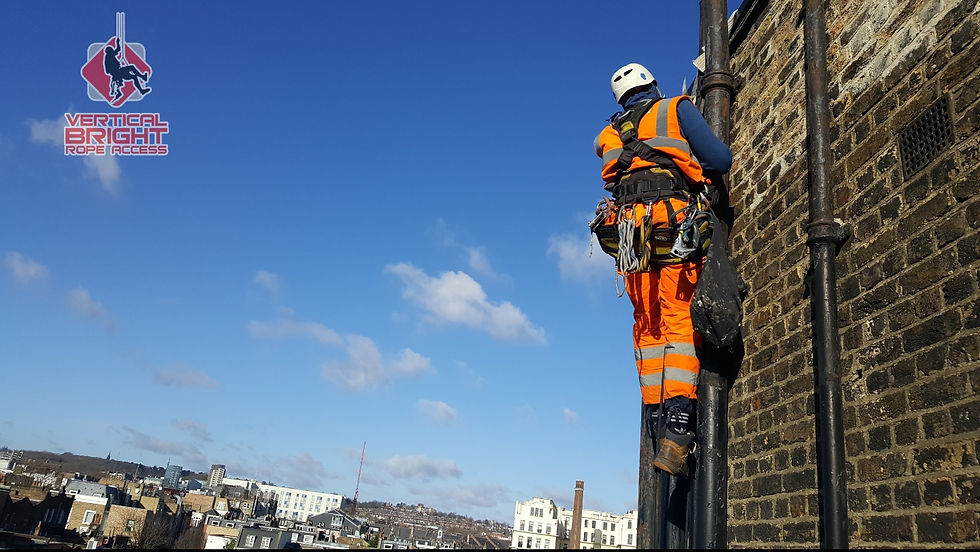Working at Height FAQ
- Vertical Bright

- May 30, 2018
- 2 min read
What does working at height mean?
To be working at height, a person must be operating in circumstances where a dangerous, if not fatal fall could occur from a lack of fall prevention equipment. This term can be used on any number of situations, provided the above criteria is met. Whether you are working on a fragile roof, on the top step of a ladder or working around a manhole, you are considered to be ‘working at height’.
What are the responsibilities of a worker ‘at height’?
When working at height, employees have a duty to take care of not only themselves, but their workmates and any pedestrians that may come into near-proximity to their work. High access workers operate in teams of two, ensuring there is always someone nearby should any problem arise. Employees also have a legal obligation to report any health and safety hazards that are encountered during work.
When skills do you need to be able to work at height?
The level of skill required to work at height, varies greatly based on the height as well as the means of access. If rope access work were to be carried out, the worker would be required to have an IRATA (Industrial Rope Access Trade Association) level that acknowledges them as being able to carry out the work. On the other side of the scale, climbing a ladder requires only a brief demonstration of the proper methods of climbing and descending the ladder.
What factors do you need to take into account when undertaking work at height?
When working at height, the weather is your biggest enemy. High winds create for highly perilous conditions when working at any height, as a ladder can be blown over just as easily as an abseiling worker can be thrown around when dangling several metres up. When high winds or otherwise bad weather conditions are present, a contractor must seriously consider if the work should be halted for health and safety concerns.
Although high access companies pride themselves on safety, the sad truth is that sometimes things can go wrong, and a worker may get stuck or stranded. It’s for these situations that a rescue plan must be made bespokely for each job.
Although high access companies pride themselves on safety, the sad truth is that sometimes things can go wrong, and a worker may get stuck or stranded. It’s for these situations that a rescue plan must be made bespoke for each job. Nothing is dropped. Furthermore, debris from the work carried out must be considered so that an exclusion zone beneath the area of work or safety netting can be established.






Comments